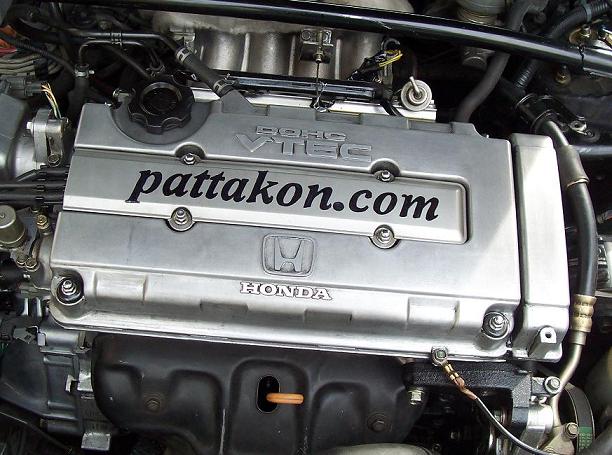McGuire,
There were and there are some successful applications of the Junkers engine, as on military applications (Russian tanks) and on small civil airplanes (DAIR : 100 PS from 92 Kg direct injection Naturally Aspirating Diesel).
The TS3 opposed piston engine with a single crankshaft

was a sophisticated design. Despite its over-complication and its additional friction, it was a successful design in its days.
I copy from a letter to the green car forum:
“the best opposed piston two-stoke diesel engine built and fitted in a vehicle was, as been mentioned, the Rootes TS3 engine fitted in Commer trucks from 1954 to 1972, using one crank and large rockers. It had an amazing power to weight ratio for the time, impressive even today, and was remarkably economical with other similar powered trucks consuming twice the fuel. A much improved 4 cylinder version, the TS4, was developed and was just about ready for production when the dreaded Americans came along.
Rootes had fallen into financial problems because of poor management in the car division. Chrysler swept in, in 1968, and bought out Rootes. They didn’t understand and eventually dropped the remarkable TS3 motor and ordered the 14 prototypes of the TS4 scrapped. The last TS3 engined truck was in 1972. Only a few TS4 prototypes were scrapped, with Rootes staff hiding them or using them as backup generators to preserve them. Chrysler wanted their existing engine ranges, or contracts with Cummins, to used and replaced the TS3 with an antiquated Cummins unit – the specs sheets alone should have told the Chrysler engineers that the TS4 engine was something special. With such crass stupidity and lack of foresight no wonder Chrysler went belly up. They were only interested in vested interest, not advancement.
A few TS4 engines have made their way to New Zealand where they were brought back to new condition, with one about to be fitted in a revamped Commer truck. A few people are looking into installing modern fuel management systems of the TS3. The TS3 is still used in boats and the likes mainly in Australia and New Zealand. This new web site is dedicated to the TS3 and TS4 engines, with lots of info on all types of diesel two-stokes. Nice one Kiwis!
http://www.commer.org.nz ”
On 2003 the first Pattakon VVA prototype car was on the roads for drive tests.
Every now and then it was pressed to its limits.
The fear was to break the underneath mechanism (crankshaft, pistons, connecting rods).
After the refusal of car makers and of universities to respond, the Pattakon VVA was published to many forums to be known to the public and get opinions and objections.
In TOV forum (the most relevant forum to the object), after many refusal and stupid “objections” like “what color your shocks (or skin) are”, they persistently did not believe the mechanism could work, neither that a prototype were really made and working on real conditions.
I proposed to the administrator of the forum to come in Athens, drive the car and write his impressions. He was absolutely negative saying there was no prototype.
I proposed/bet to pay his airplane tickets to come in Athens to see and drive the car.
Here is a paragraph of his written reply :
“So, Manolis, rather than doing anything to convince me further that you are right...this has, conversely, convinced me even more that you do NOT have a running engine. It has heightened my suspicions that you ARE, in fact, a mendacious charlatan (ooh, three point words!).”
I was driving the car every day and I had to prove “I was not an elephant”.
The car (Renualt 19, 1400cc) is still working with the initial “hand made” Pattakon VVA mechanism on it.
The next Pattakon VVA prototypes (Honda Civic) are also for years on the roads revving from 330 to 9000 rpm (no other continuous VVA on the world can).
It is not yet adapted by the car makers, but this fact does not mean it is not successful. It has proved better than what theory predicted.
Here is the light version (Pattakon roller VVA only on the intake valves)

Take a look at the video at
www.pattakon.com/vvar/OnBoard/A1.MOV (QuickTime format, 4MB) of the Pattakon VVA Honda Civic prototype running on public road at 9,000 rpm. The same engine idles at 330 rpm (read the
www.pattakon.com/vva/VVA_Idle/VVA_Idle.htm ). For more about Pattakon VVA (Variable Valve Actuation) see at
www.pattakon.com , all the underlined topics at the left side.
BMW’s valvetronic (lost motion VVA) cannot rev high (above 6,500 rpm), so they cannot use it on their sport cars neither on their bikes.
Four years ago it seemed “chimera” to design, built, install and adjust such a system on existing cylinder heads. Now it is more reliable than the rest car.
The story is similar in case of PRE.
Invent, design, calculate, patent, built prototype and take opinions/objections from anywhere.
McGuire, everybody knows the safe side “a new design has much more possibilities to fail than to succeed”.
The real challenge is to predict “why” the new design will fail.
You persistently (and correctly) write that
“the world does not need and is not going to buy a diesel engine that is less fuel-efficient than current designs, costs more to produce, weighs more, and produces greater emissions”.
But, the same persistently, you refuse to explain why the PRE engine is less fuel efficient or more costly or more heavy or more pollutant than conventional.
This is the point.
To say that you are pretty confident, does not count on technical discussions.
Charles Duell, head of US patent Office, was confident (on 1899) to say “everything that can be invented has been invented”,
Ken Olson – Digital Equipment president - on 1977 was confident saying that “there is no reason for any individual to have a computer in their home,
And Bill Gates was confident saying (on 1981) that 640 KB memory ought to be enough for everybody,
McGuire, help me save time and money by proving to me that the PRE engine has at least one of the bad characteristics you write. Just one. Because one is enough to withdraw the PRE project.
Can you, please?
Thanks
Manolis Pattakos



















